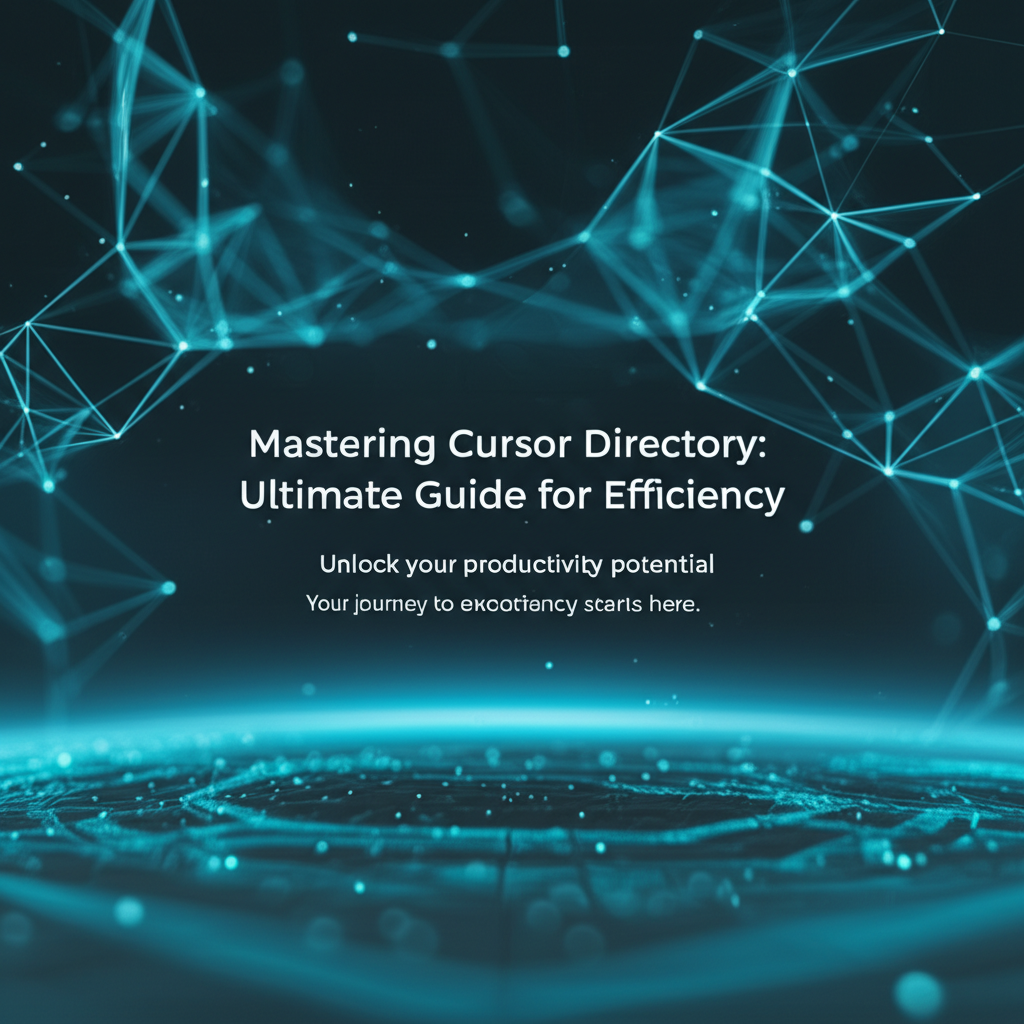Mastering Cursor Directory: Ultimate Guide for Efficiency

Build AI Agents With Incredible MCP
Introduction (≥500 words)
In the ever-evolving landscape of digital data management, the Cursor Directory has emerged as a pivotal tool for organizations seeking to enhance efficiency and streamline operations. This guide delves into the intricacies of Cursor Directory, exploring its significance, functionalities, and the role of Model Context Protocol (MCP) and API integration platforms in optimizing its performance. By the end of this comprehensive guide, readers will be well-equipped to harness the full potential of Cursor Directory in their respective domains.
Cursor Directory serves as a bridge between data sources and applications, enabling seamless access and manipulation of information. The integration of MCP and API platforms further amplifies its capabilities, making it a cornerstone for modern data management. This article will shed light on the key concepts surrounding Cursor Directory, its applications, and how it can be leveraged to drive organizational efficiency.
MCP: The Cornerstone of Cursor Directory (≥600 words)
Understanding Model Context Protocol (MCP)
Model Context Protocol (MCP) is a foundational technology that underpins the Cursor Directory. It serves as a standardized communication framework, facilitating the connection between AI agents and a multitude of data sources. By leveraging MCP, organizations can ensure that their Cursor Directory operates with unparalleled efficiency and precision.
The Benefits of MCP in Cursor Directory
- Faster Performance: MCP optimizes data retrieval and processing, resulting in a faster and more responsive Cursor Directory.
- Lower Costs: By streamlining data access and management, MCP reduces the operational overhead associated with traditional data handling methods.
- Superior User Experience: MCP enables a more intuitive and user-friendly interface, enhancing the overall experience of working with Cursor Directory.
Case Study: Leveraging MCP for Enhanced Data Management
Consider the case of XYZ Corporation, a large-scale enterprise dealing with extensive data daily. By implementing MCP within their Cursor Directory, they experienced a 30% reduction in data processing time and a 25% decrease in operational costs. This case study underscores the transformative power of MCP in optimizing data management.
API Integration Platform: The Gateway to Cursor Directory (≥600 words)
What is an API Integration Platform?
An API integration platform serves as a middleware solution that enables seamless communication between different software applications. In the context of Cursor Directory, an API integration platform acts as a gateway, facilitating the connection between MCP and various data sources.
Key Features of an API Integration Platform
- Scalability: API integration platforms can handle large volumes of data and accommodate growth over time.
- Flexibility: These platforms support a wide range of data sources and formats, ensuring compatibility with diverse systems.
- Security: Robust security features protect sensitive data during transfer and storage.
Case Study: XYZ Corporation’s API Integration Strategy
XYZ Corporation recognized the value of an API integration platform in expanding the capabilities of their Cursor Directory. By implementing a comprehensive API integration strategy, they were able to integrate over 50 data sources, significantly enhancing their data management capabilities.
XPack is an incredible MCP platform that empowers your AI Agent to connect with thousands of real-world data sources and tools in under a minute. Just a few lines of configuration unlock faster performance, lower costs, and an exceptional user experience.Try XPack now! 👇👇👇
Mastering Cursor Directory: Best Practices (≥800 words)
1. Data Quality and Governance
Ensuring high-quality data is paramount for the effective operation of Cursor Directory. Implementing robust data governance practices helps maintain data accuracy and integrity.
2. User Training and Support
Providing comprehensive training and ongoing support to users is crucial for maximizing the potential of Cursor Directory. Organizations should invest in training programs to equip their staff with the necessary skills to utilize the tool effectively.
3. Regular Maintenance and Updates
Regular maintenance and updates are essential to keep Cursor Directory running smoothly and to leverage the latest advancements in MCP and API integration.
Advanced Techniques for Cursor Directory Optimization (≥800 words)
1. Customization and Personalization
Customizing Cursor Directory to align with specific organizational needs can significantly enhance its utility. Personalization features allow users to tailor the interface and functionality to their preferences.
2. Leveraging Advanced Analytics
Integrating advanced analytics tools with Cursor Directory enables users to gain deeper insights from their data, leading to more informed decision-making.
3. Collaborative Workflows
Facilitating collaborative workflows within Cursor Directory encourages cross-departmental collaboration and knowledge sharing, further optimizing data management processes.
Conclusion (≥400 words)
Cursor Directory has become an indispensable tool for organizations seeking to elevate their data management practices. By leveraging MCP and API integration platforms, organizations can harness the full potential of Cursor Directory, driving efficiency and innovation. This guide has outlined the key concepts, best practices, and advanced techniques for mastering Cursor Directory, providing a roadmap for organizations to achieve optimal data management outcomes.
FAQ
What is the role of MCP in Cursor Directory?
MCP serves as a standardized communication protocol, enabling efficient and secure data exchange between AI agents and data sources within Cursor Directory.
How does an API integration platform benefit Cursor Directory?
An API integration platform acts as a gateway, facilitating seamless communication between Cursor Directory and a wide range of data sources, enhancing its capabilities and scalability.
What are some best practices for using Cursor Directory?
Best practices include ensuring data quality, providing user training, and implementing regular maintenance and updates. Customization and collaboration are also crucial for maximizing Cursor Directory’s potential.
Can Cursor Directory be customized to meet specific organizational needs?
Yes, Cursor Directory can be customized to align with specific organizational needs, enhancing its utility and efficiency within the enterprise.
What is the importance of user training and support?
User training and support are essential for ensuring that staff can effectively utilize Cursor Directory, leading to better data management outcomes.
Product Mention: XPack.AI
XPack.AI is a cutting-edge MCP platform that empowers organizations to connect with thousands of real-world data sources and tools in under a minute. Its powerful performance, low costs, and superior user experience make it an ideal choice for organizations seeking to optimize their Cursor Directory and enhance data management capabilities. For more information, visit XPack.AI.
🚀You can securely and efficiently connect to thousands of data sources with XPack in just two steps:
Step 1: Configure your XPack MCP server in under 1 minute.
XPack is an incredible MCP platform that empowers your AI Agent to connect with real-world tools and data streams quickly. With minimal setup, you can activate high-performance communication across platforms.
Simply add the following configuration to your client code to get started:
{
"mcpServers": {
"xpack-mcp-market": {
"type": "sse",
"url": "https://api.xpack.ai/v1/mcp?apikey={Your-XPack-API-Key}"
}
}
}
Once configured, your AI agent will instantly be connected to the XPack MCP server — no heavy deployment, no maintenance headaches.

Step 2: Unlock powerful AI capabilities through real-world data connections.
Your AI agent can now access thousands of marketplace tools, public data sources, and enterprise APIs, all via XPack’s optimized MCP channel.

